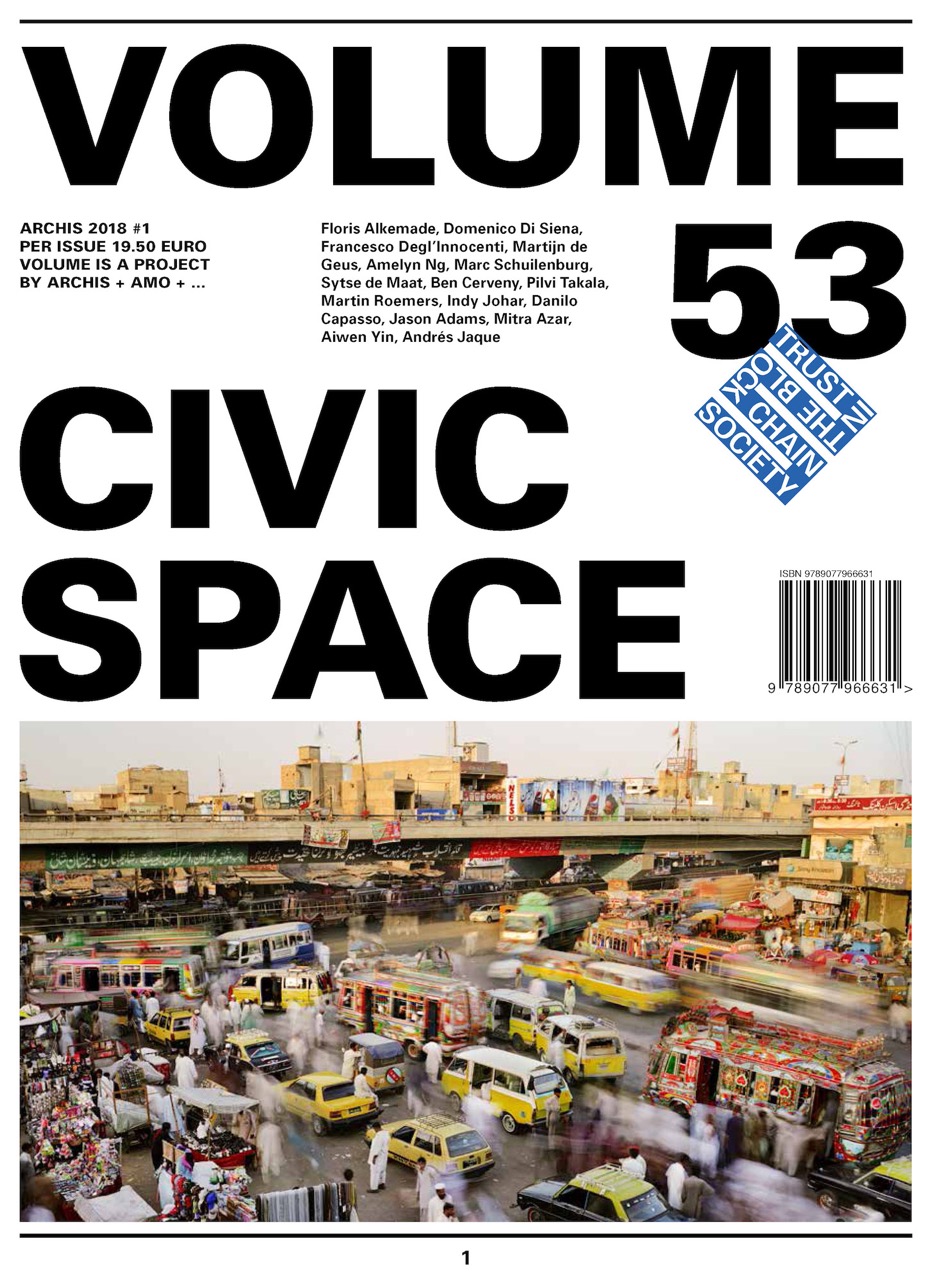
When dealing with public space, time is rarely considered a variable in the equation. Quick to go to the square as the place where collective political action takes place, we often forget to think when such actions happen and what strategy might support them.
Jason Adams, Seattle-based media and political theorist, argues for political action on, in and through time – what might be called kairopolitics.
Leonardo Dellanoce: Public space is perhaps the most layered space there is in the urban environment. Questions about governance, ownership, and citizenship quickly arise even when talking only about its space. Even though it is widely recognized that public space has a strong political dimension, one element seems always to be overlooked: time. What is the relation between space and time in this context?
Jason Adams: The Alex Garland film ‘Annihilation’ (2018) captures the importance of this question very well, insofar as it concerns a form of alien invasion into terrestrial space in which the invasion is not an invasion of alien beings, but an entirely alien physics into terrestrial physics. As in Annihilation, governance, ownership, citizenship, and subjectivity are all always already exposed to continuous ruptures, as new claims to belonging impress themselves into and upon what was previously imagined as an already settled set of cultural norms and identities. But in this case, even a new attentiveness to generalized globalization, even a totally reimagined planetary public space, would be inadequate to what it is faced with. Yet it’s excellent too, as a metaphor for the smaller scale relation between the local and the global, which we’ve yet to reckon with fully, even though we probably have more than we have with the post-planetary/transgalactic. Beyond that though, first, I’d say, we have to consider the question of what is meant by ‘public’, if we are to consider the relationship between space and time in relationship to it, so that we don’t allow our understandings to be overtaken by either presentism, the metaphysical logic of our 24/7, always-on culture, or historicism, which today we can expand the definition of to include history-centric forms of theorizing. Why might it be said, from a more critically-futurist perspective, that public space is layered, and in what manner might we say that?

First, of course, there is the ‘stack’ – the multiple layers of sovereign power, including the state, media, capital, technology, law, language, etc. In many respects, especially from a presentist or historicist perspective, all of these are spatial layers: in the actually-existing present, there are insides and outsides, borders and territories, all of which have real material effects, and all of these contribute to that. But as continental philosophy of space has shown us in particular, each of them is also temporal. Firstly, because of the multiple coexisting times that constitute anything that we would consider to be public, or in other words, anything that is conceived as a commons, for a particular community, or for all communities co-existing as a metacommunity. But also because space is the product of everyday reproduction through repetition – the repetition of travel routes, social practices, language norms, cultural norms, erotic norms, and the like. At the same time, public space is not only the particular places provided by the state, such as the myriad city and town-based public parks where Occupy Wall Street flourished (though some of them were joint public/private, like Zuccotti Park), but is also universal space, which we find replicating itself online when people in Toronto, Mexico City or London see what is happening in New York, then rush to put it into practice where they are. This is also public space, even though it is largely outside of the command of the state. It is imaginary public space, the universal public space of the planetary, which exists not in the past or the present, but in people’s future orientations (imaginations), and can therefore, potentially, be manifested anywhere. The political dimension of this lies not in presentism or historicism itself, but in the tension between speculative space and the barriers that are thrown up to manifest it. For example, even though there is very little public control over space when considered in its transnational, planetary dimension (the domain of global capital, the world-hegemonic states, etc.), we know that in nearly every country in the world, including, however surprisingly, the US and the UK, the idea of turning the UN into a proportionally-balanced, democratic world government, is supported by the majority of the world’s populations. Yet, we still allow global capital and the world-hegemonic states to run roughshod over the world’s populations, including its own populations. There is a real political tension there, specifically over public space, and it is one that may find greater expression in the years to come, as the Westphalian system increasingly experiences a variety of strains.
LD: Public space, whether a square or the streets, is also a space of protest. In your book Occupy Time, you delve into the chronological dimension of protesting and into tactics-strategies. In particular you make a distinction between immediatism and immediacy. What are the consequences of this distinction for political actions and the space where they happen?
JA: Well, immediacy is the reigning temporality of our time, the time of presentism. The downside to it is that it focuses all of our attention upon the present – ‘React Now!’, as the newspaper websites and other online venues implore us, or the FOMO (Fear Of Missing Out) one gets when a comment war erupts on one’s own profile or someone else’s, when you have to attend to some pressing matter and cannot engage. It’s a given that this immediacy – this demand for an immediate response, over a technological medium that becomes less and less perceptible to us – ignores the past. I of course, agree with those who argue that ‘the past is not over, it is not even the past’, but more importantly, I think, we need to pay attention to how immediacy cancels our ability to imagine the future, particularly alternate, preferable futures.
Public space as it is experienced in the present is conditioned by prior repetitions, often over the course of hundreds or thousands of years, and there are, as they say, many roads left untaken that can still be reactivated. But critical theory has been saying that for nearly a century now, with very little attention to the future, comparatively-speaking. The distinction between immediacy and immediatism is an important one for political action, because the former refers to the technological and temporal condition in which we live at present, while the latter refers to the ideology that undergirds it. It’s especially deceptive in my view, because immediatism seems to be future-oriented, insofar as we are already living in the future, technologically, in many respects. But in reality, it isn’t only history that immediatism ignores, it is perhaps even more so the future that it destroys, in that it destroys our capacity for imagination, for speculatively affirming futures that we would like to see come to fruition. So the more important tension, in my work, is what I call kairopolitics, which can be defined as the tension between the ‘right time’ (the morally correct way to relate to time personally, socially, and politically) and the ‘wrong time’, that which is effaced by the reigning ideology of presentism or immediatism, both in terms of the curtailment of memory, and even more, imagination. Imagination is even more lacking today than memory, because critical theory and activist social movements have done a great deal to rectify that in the past several decades. and it has to a significant degree, reached the mainstream, whereas they haven’t done nearly as much in relation to the future, comparatively. When the dust is settled, however momentarily, we still sit here in a state of culturo-political stasis and stagnation, so long as this remains unaddressed, as it has since the mid-90s when the Internet was popularized.
LD: At the moment, strategy is a trending object of study in the design discourse. Many practitioners now want to be addressed as strategic designers and theorists like Keller Easterling now speak of medium design and the design of active forms. Your kairopolitical proposition deals also with overcoming the division between tactics and strategy to achieve the tactico-strategic. Do you think it can also be deployed on the design level? If so, how do you envision it?
JA: Easterling’s work on infrastructure and extrastatecraft is absolutely crucial today, in my opinion. The shift in ontological focus, like that of the stack, is mirrored in the music world and the art world in multiple ways, especially in the shift from artist to producer – which is another way of saying, from tactician to strategist. In essence, I argue for a complementarity of strategy and tactics, in which strategy – thinking in terms of the future – takes the predominant role. In music, this might mean privileging more forward-thinking aesthetics like that found in Holy Other or Nosaj Thing, rather than backwards-oriented artists like Ariel Pink or Macintosh Plus, while in architecture, it might mean considering more future-oriented architects like Vito Di Bari or Arakawa + Gins, rather than more historically-focused architects like Bernard Tschumi or Daniel Libeskind. In terms of design thinking, what I describe as ‘tactico-strategic’ approaches are those that retain a degree of tacticality, which I would describe as awareness of the past folded into one’s spontaneous actions in the present, but which place the greater emphasis on strategy.
Both design-wise, and otherwise, it seems appropriate to me that strategy more than tactics, is coming back into its own today. The reign of immediacy and immediatism (or presentism) in our time has tended towards an over-focus on tactics, in which how people react in the present, or in everyday life, is privileged over any other form. While this might seem to be technologically, and therefore, temporally-appropriate on the surface, kairopolitics, as I envision it, is about the contestation of what is the right time, and what is the wrong time, for anything at all. In other words, the contestation of what is appropriate, temporally-speaking. One example I derive from Plato in Occupy Time is sexuality, because for the ancient Greeks, homosexual activity, so long as it occurred alongside heterosexual activity, and to the supposedly correct degree of frequency, was not considered to be a problem. Something like in our present time, and quite unlike much of the last two millennia in the West, it was not thoroughly circumscribed. But, the caveat, morally-speaking, was that it could not occur ‘too much’. It was an item of Aristotelian virtue to keep it to a minimum, something like how a bourgeois organic omnivore today might eat only free range, BGH-free meat, and no other kind of meat, and might only do so on rare occasions. Kairopolitics addresses this moralization of time, on multiple fronts, including that of design. ‘The New Aesthetic’ (Ian Bogost’s term for Tumblr aesthetics)1, or certain forms of relational aesthetics, seem to make a virtue of regurgitation and recontextualization, which is arguably just another form of presentism or immediatism that does not lend much to a critical analysis of our possible futures. And today, we can see clearly that this aesthetic is being redeployed by the alt-right, where ‘synthwave’ (retro synthesizer-focused music)2 has become ‘fashwave’3, and fade haircuts, which once signified progressive politics, queer sexualities – or simple apolitical hipness – are suddenly redeployed as the ‘Hitler cut’. While one response to this might be a shift in tactics, what would that amount to other than just more of the same, more presentism and immediatism?

LD: Earlier you mentioned immediacy as the contemporary condition engendered by current technologies. At the same time, technology is also actively shaping the relation between the individual and the group, domestic and public and so forth – Tinder’s algorithm already partly changed the genetic makeup of some societies, for instance.
What does this imply for the notion of public? Are we in need of a new terminology of togetherness politically, socially, relationally? Maybe a time-based one?
JA: The New Centre for Research & Practice, which I co-founded with Mohammad Salemy (and our initial Board of Directors) is a great example of this, insofar as it uses digital platforms to create spaces in which individuals can coalesce in ways in which they would never have been able to, simply in-person. No one brick-and-mortar university or college can have all the most outstanding emerging thinkers in the arts, media, politics, etc., as faculty, since they’d all have to agree to move to whatever physical location it would be located at, and that is unlikely. But a digital institution can easily achieve this, and while we do so, we are totally reontologizing the structure of academia and para-academia, alike. Beyond education though, I would just mention that some recent films from East Asia have captured these shifts especially well with respect to queer sexualities, such as Tung-yen Chou’s movie Looking For? (2017) about Grindr-like apps around the world. One interviewee, when asked what he was looking for, replied “everything, because everything is possible.” Another example is Yongliang Chang’s Dummy (2016), in which a teenager falls in love with a drag queen he didn’t realize was assigned male at birth, and then becomes close with the performer, despite not having a full handle on his own sexuality. While that film doesn’t invoke technology or temporality per se, the timing correlates perfectly with what is happening today, in terms of the multiplication and liquification of identity, which occasionally means liquidation of previously stable categories of identity, on every single level. This has had numerous ripple effects upon individual/group, and domestic/public relations, because of the hyper-temporalization of space, which has increasingly taken hold under the regime of immediatism. Tinder is a great example of this, insofar as not only conventional marriage, but also the very notion of dating itself has been thrown into question: there is no relationship in existence that is not at least potentially put into question by the mere fact of the Internet’s intervention into supposedly private space. The household is no longer a household, it is just as much of a heterotopia as any airport or hotel one might imagine – if not even more so, since in domestic spaces, repetitive boredom is more easily mitigated than ever before. Today, we might say, it is actually the airport or the hotel that is the homotopia, and not the other way around. Today what we need is to move away from models of belonging in which belonging means belonging to being, today we should be embracing belonging to becoming itself, yet not in the form of presentism or immediatism. We should be thinking about how both cancel our ability to imagine future modes of belonging, and become more attentive to what might not have even been considered yet, in that respect.
1. ‘The New Aesthetic Needs to Get Weirder‘, Ian Bogost
2. https://en.wikipedia.org/wiki/Synthwave
3. ‘Trumpwave and Fashwave Are Just the Latest Disturbing Examples of the Far-Right Appropriating Electronic Music’, Pen Bullock and Eli Kerry
4. ‘Does this haircut make me look like a Nazi?’, Monica Hesse and Dan Zak

This article relates to Volume #53, ‘Civic Space’.